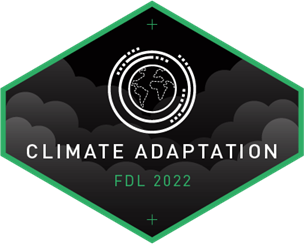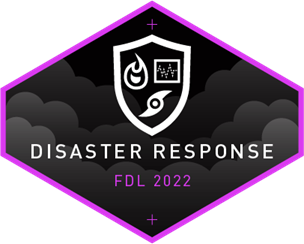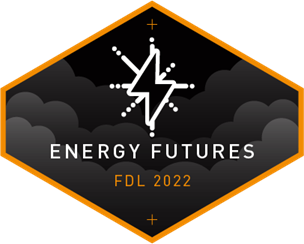The Artificial Intelligence and Technology Office (AITO) of the US Department of Energy will partner with Frontier Development Lab to apply synergies between physics, simulation, and machine learning to clean energy, Earth science and climate resilience challenges.

May 18, 2022, Mountain View, CA – The US Department of Energy (DOE) is joining the Frontier Development Lab (FDL) program to advance basic research at the agency. FDL is a public-private partnership between the SETI Institute, NASA, USGS, Google Cloud, Intel, Lockheed Martin, Nvidia, Trillium Technologies and other US and international partners.
FDL is an applied artificial intelligence research program that tackles fundamental knowledge gaps in space, Earth science and energy by pairing machine learning experts with subject domain experts. Research teams are supported by massive compute resources, relevant datasets and technology advisory from private sector partners for an intensive eight-week, paid research sprint over the summer. Teams address research challenges such as astronaut health, lunar exploration, heliophysics and climate change. FDL is excited to join forces with DOE and add challenge topics addressing critical DOE priorities, such as energy futures, climate adaptation and disaster response.
"We are delighted to welcome DOE as a major new federal partner in the FDL program this year," said Bill Diamond, CEO of the SETI Institute. "DOE's vision in creating an Artificial Intelligence & Technology office to coordinate AI activities across the Department aligns perfectly with FDL's underlying premise of exploring how to apply the latest AI/ML tools and techniques to advance basic research and fundamental science," said Diamond.
"AITO's challenge portfolio is one of the most exciting and important on the planet. Suppose you are interested in really making a difference on the biggest problems of our time. In that case, this is the front line: Co2 sequestration, H2 cost reduction, climate accelerated infrastructure adaptation and wildfires," said FDL Director James Parr.
"Moreover, this is grown-up, serious AI-assisted problem solving and the kind of bold and ambitious research the human race needs right now. We’re incredibly privileged to be tackling these challenges with the DoE, NASA and others and are looking forward to some terrific research outcomes.”
“Congratulations to the researchers, I look forward to meeting you! I am honored to co-sponsor this effort and I sincerely appreciate the partnership with FDL. The U.S. Department of Energy (DOE) continues to ensure America’s security and prosperity by addressing its energy, environmental and nuclear challenges through transformative science and technology solutions. We stand ready to apply these outcomes, furthering advancement of climate resilience, clean energy, infrastructure innovation, and Justice40 for citizens” said Pamela Isom, Director of the Department’s Artificial Intelligence & Technology Office.
For 2022, FDL will undertake 7 DOE research challenges addressing topics selected by various divisions across the Department:

Climate Adapting the Grid
The DOE needs to address a multitude of risks posed by climate change, such as maintaining our society’s energy infrastructure from more frequent and extreme weather events. Can AI help determine optimal approaches to ensure we are adapting effectively?
Fortifying Subterranean Power Grids
Can physics-informed AI methods be applied to geophysical data to fortify our subterranean energy assets, such as site identification, line undergrounding, earthquake preparedness, subsurface control, and monitoring subsurface HVDC?
Geomechanics for CO2 Sequestration
Can we apply ML to geomechanics and geophysics to advance innovations in forecasting induced seismicity rates in potential Co2 sequestration sites? AI may be able to help estimate stress state using focal mechanism data, picking seismic events from waveform data, or finding faults in reflection seismic data.

Wildfire: Multispectral Estimation of Fuel Loads
What if we could use ML-enhanced tools to prevent fires from starting or new fires from growing into conflagrations? Ignition probability can change rapidly. Extreme rainfall leads to lush vegetation growth, which subsequently dries out and becomes fuel. Can In-orbit multispectral cameras and ML identify the areas most prone to fires igniting?
Urban Rad Hunter
Can we spur innovations in detecting, identifying, and localizing in urban search missions? Currently, search teams rely on radiation detection systems to alert them to the presence of an illicit nuclear threat source. However, due to variation in natural radiation and the presence of non-threat sources, detection algorithms must be carefully balanced between missing threat sources (false negatives) and reporting to many false positives.

Concentrated Solar Power Controller Optimization
Based on a given control scheme (how CO2 flow, temperature and pressure varies with changes in ambient temp and load demand), can we use AI to understand and derive relationships for each of these variables? For example, dry cooler heat duty, target outlet CO2 temperature, CO2 flow, and predicted inlet CO2 temperature, allow optimized selection of dry cooler design parameters, including surface area, fan size and speed, material, and others.
The H2 Discovery Engine
Liquified hydrogen gas is poised to become a key fuel in our future de-carbonized energy landscape. The technologies to produce and distribute hydrogen are developing fast and in multiple directions, with new innovations happening every day. How do we keep up with the latest research and determine which ideas will work as promised and scale up to useful levels? AI-enhanced tools can help us discover new ideas and identify the most promising through their connections and background.
Other challenge areas for FDL's 2022 program will be heliophysics, lunar exploration, astrobiology, space medicine and Earth science.
Commitment to Diversity, Equity and Inclusion (DEI)
FDL takes DEI seriously and seeks researchers, mentors, and faculty representing diverse communities to address the broad set of challenges. FDL teams have always been more diverse than the best industry and academic metrics. FDL makes every effort to reach a broad community, particularly those often under-represented in tech. This year's challenges push the boundaries of our research to date, and outreach and recruiting efforts include Historically Black Colleges and Universities, Minority Serving Institutions and Tribal Colleges and Universities.
FDL’s 2022 program kicks off on June 20 at the SETI Institute’s headquarters in Mountain View, CA.
About the SETI Institute
Founded in 1984, the SETI Institute is a non-profit, multi-disciplinary research and education organization whose mission is to lead humanity's quest to understand the origins and prevalence of life and intelligence in the universe and share that knowledge with the world. Our research encompasses the physical and biological sciences and leverages data analytics, machine learning, and advanced signal detection technologies. The SETI Institute is a distinguished research partner for industry, academia, and government agencies, including NASA and the National Science Foundation.
Contact information
Rebecca McDonald
Director of Communications
SETI Institute
mcdonald@seti.org
About Trillium Technologies
Trillium Technologies (trillium.tech) is a specialist technology contractor focused on tackling grand challenges, such as climate change, disaster response, wildfires, obesity, cancer, planetary defense (asteroids and comets), lunar exploration and sustainability.
DOWNLOAD FULL PRESS RELEASE HERE.





